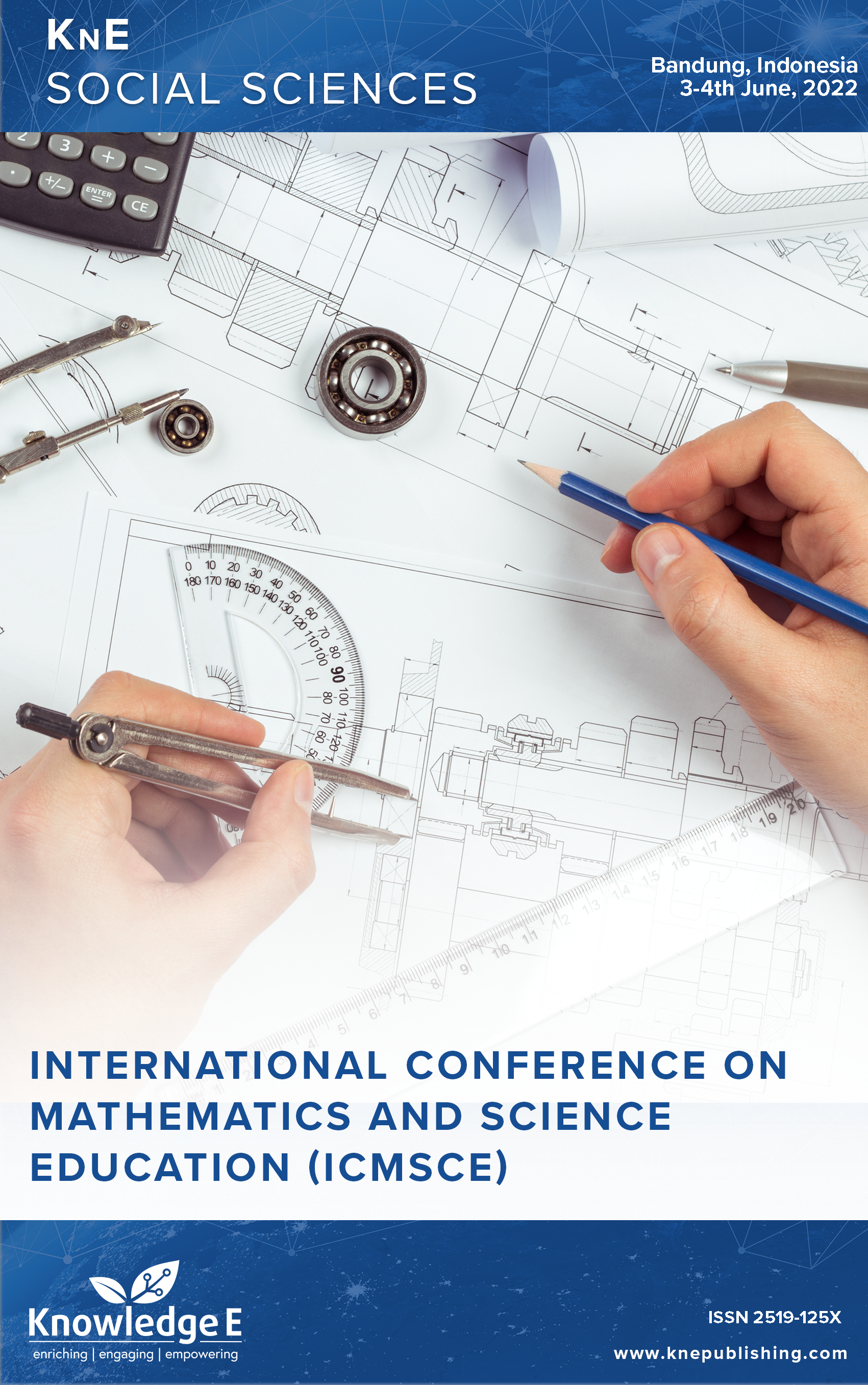Perception of Citizen Science Project in Ecology Courses Using Rasch Measurement Model
DOI:
https://doi.org/10.18502/kss.v9i13.16057Abstract
The objectives of this study are to obtain information about the knowledge and readiness of students to accept citizen science that is integrated into ecology. Respondents were students of the biology education study program, State Islamic University, Sulthan Thaha Saifuddin Jambi, who had already completed the Ecology course. Respondents amounted to 75 students consisting of 67 female students and 8 male students. The study employed a quantitative descriptive approach. The perception data obtained was analyzed by utilizing Rasch model measurement software, WINSTEPS version 5.2.4.0. Rasch analysis was chosen based on its capability to model the relationship between item’s difficulty in rating, person’s ability, and possible responses. Data in the feasible category, since the calculated INFIT MNSQ and OUTFIT MNSQ scores are close to 1.0 logit, also the INFIT ZSTD and OUTFIT ZSTD scores are close to 0.0. The Cronbach Alpha value implies that a questionnaire can be accepted to measure student perception. The results of data analysis find out symptoms that students have a desire to try something new that are brought into Ecology courses. The diagnosis of student perceptions also indicates that students are expecting something new to be included in ecology learning that can support the improvement of competence in accordance with their expectations.
Keywords: perception, citizen science project, ecology courses, rasch measurement model
References
Slingsby D, Barker S. Making connections: biology, environmental education and education for sustainable development. J Biol Educ. 2010;38(1):4–6. DOI: https://doi.org/10.1080/00219266.2003.9655888
Raharja S. “Pendidikan berwawasan ekologi: pemberdayaan lingkungan sekitar untuk pembelajaran,” https://eprints.uny.ac.id/137/1/Pendidikan_Berwawasan_Ekologi.pdf, (2010).
Fraisl D, Hager G, Bedessem B, et al. “Citizen science in environmental and ecological sciences.,” Nature Reviews Methods Primers. vol. 2, no. 1, p. 2022. https://doi.org/10.1038/s43586-022-00144-4. DOI: https://doi.org/10.1038/s43586-022-00144-4
Bonney R, Shirk JL, Phillips TB, Wiggins A, Ballard HL, Miller-Rushing AJ, et al. Citizen science. Next steps for citizen science. Science. 2014 Mar;343(6178):1436–7. DOI: https://doi.org/10.1126/science.1251554
UNESCO. UNESCO recommendation on open science. UNESCO; 2021.
Kobori H, Dickinson JL, Washitani I, Sakurai R, Amano T, Komatsu N, et al. Citizen science: A new approach to advance ecology, education, and conservation. Ecol Res. 2016;31(1):1–19. DOI: https://doi.org/10.1007/s11284-015-1314-y
Wehn U, Gharesifard M, Ceccaroni L, Joyce H, Ajates R, Woods S, et al. Impact assessment of citizen science: state of the art and guiding principles for a consolidated approach. Sustain Sci. 2021;16(5):1683–99. DOI: https://doi.org/10.1007/s11625-021-00959-2
Rasch G. Probabilistic Models for Some Intelligence and Attainment. Chicago: University of Chicago Press; 1980.
Ballard HL, Dixon CG, Harris EM. Youth-focused citizen science: examining the role of environmental science learning and agency for conservation. Biol Conserv. 2017;208:65–75. DOI: https://doi.org/10.1016/j.biocon.2016.05.024
Shirk JL, Ballard HL, Wilderman CC, Phillips T, Wiggins A, Jordan R, et al. Public participation in scientific research: A framework for deliberate design. Ecol Soc. 2012;17(2):art29. DOI: https://doi.org/10.5751/ES-04705-170229
Bond T. Applying the rasch model. Routledge; 2015. https://doi.org/10.4324/9781315814698. DOI: https://doi.org/10.4324/9781315814698
Linacre JM. “Measurement, meaning and morality.,” In: Pacific Rim Objective Measurement Symposium (PROMS) & International Symposium On Measurement & Evaluation (ISME). pp. 1–7. University of Sydney, Sydney (2005).
Abdaziz A, Jusoh MS, Omar H. Amlus, and T. Salleh, “Construct validity: A rasch measurement model approaches.,”. Journal of Applied Science and Agriculture. 2014;9(12):7–12.
Sumintono B, Widhiarso W. Aplikasi Model Rasch untuk Penelitian Ilmu-ilmu Sosial (edisi revisi). Trim Komunikata. Cimahi; 2014.
Ishar NI, Masodi MS. “Students’ perception towards quality library service using rasch measurement model,” In: 2012 International Conference on Innovation Management and Technology Research. pp. 668–672. IEEE (2012). DOI: https://doi.org/10.1109/ICIMTR.2012.6236479
Adams D, Chuah KM, Sumintono B, Mohamed A. Students’ readiness for e-learning during the COVID-19 pandemic in a South-East Asian university: a Rasch analysis. Asian Education and Development Studies. 2022;11(2):324–39. DOI: https://doi.org/10.1108/AEDS-05-2020-0100
Juandi T, Kaniawati I, Samsudin A, Septem L. “Implementing the rasch model to assess the level of students’ critical and reflective thinking skills on the photoelectric effect,” vol. 7, no. 2, pp. 220–231, 2023. https://doi.org/10.21067/mpej.v7i2.8252. DOI: https://doi.org/10.21067/mpej.v7i2.8252
Wilson M. Constructing Measures An Item Response Modeling Approach. Lawrence Erlbaum Associates; 2023. https://doi.org/10.4324/9781003286929. DOI: https://doi.org/10.4324/9781003286929

